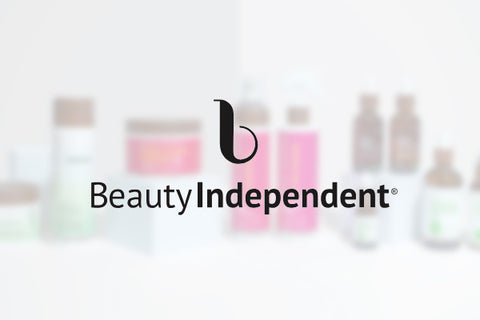News & Press
Allure: The Best Products for Low Porosity Hair Types

Natural girls, have you ever stepped in the shower to wash your hair and it seemed like your curls just refuse to absorb water? You're not dreaming; chances are your hair really isn't taking to the moisture, and this likely means you have a low-porosity texture. "Low porosity hair is resistant to absorbing and losing water due to its tighter structure," explains board-certified dermatologist Shani Francis.
The pore is simply a channel or gateway for ingredients to enter the hair shaft. "Simply put, low porosity hair is a hair fiber that has overlapping cuticles. These overlapping cuticles create a barrier preventing water and moisture to penetrate," explains trichologist and inventive colorist, Bridgette Hill. She says that, in low porosity hair, the cuticle is so tightly overlapped that water and water-based products bead on top of the hair fiber versus penetrating the hair fiber. "Hair porosity refers to how open your hair shaft is to receive and lose a substance, most often water or moisture," says Francis.
Hill explains that extremely low porosity hair requires a little alkalinity for best results. William Gaunitz, WTS, trichologist, and founder of Advanced Trichology concurs. "The best way to open the cuticle of a hair is to create an alkaline environment," he says. "Washing hair with alkaline shampoo could be a good option for getting moisture into the hair." This is where a clarifying or exfoliating shampoo comes in. "Ingredients in these shampoos open the cuticle to allow for moisture to enter and break down the protein structures," says Hill. Francis further explains that the best ingredients for low porosity hair should be smaller, molecule-based, and more polar. "Alkaline ingredients will open the cuticle to make absorption easier; acidic closes the cuticle," says Francis.
Breaking down protein may not seem like a good idea for hair, but Hill explains that this process allows humectants and moisture to penetrate the hair fiber deeper, giving the hair more elasticity, softness, and shine. She also notes that your hair won't feel great to touch after shampoo, but says that it will after you properly condition it.
Jamila Powell, curl expert and founder of Maggie Rose Salon, says that hair types that don't accept hydration easily need to make sure hair is hydrated and moisturized frequently. "The best way to do this is to wash your hair more frequently and through consistent deep-conditioning," she says. "Low-porosity hair requires as much hydration as possible, and the best form of hydration is water. Therefore, I would suggest washing your hair more frequently, not the opposite." Gaunitz adds that using alkaline water that's above an 8.0 pH could also encourage a higher level of moisture. Cosmetic chemist Ron Robinson, of Beauty Stat, also notes the importance of using the proper pH for both water and your products: "High pH products, which are more alkaline, can make hair more porous," he says. "And low pH products like apple cider vinegar can make hair less porous."
After you shampoo, Hill says to start your conditioning and styling with a humectant to attract moisture. "It works as the adhesive layer of moisture that is small enough to penetrate the cuticle," says Hill. The second layer of moisture should be lipids. "Lipids, which are found in fatty acid oils like avocado and shea, binds to the humectant filling open spaces created by the clarifying shampoo with moisture-binding ingredients."
Powell also advises against emollient-heavy formulas. "I would recommend avoiding most oil-based products and look for more moisture-based products so that the ingredients don’t just sit atop the hair." Hill agrees: "It is important for people with low porosity hair to use conditioners that are water-based. Natural glycerine, lanolin, avocado, jojoba, and shea are all ingredients that offer loads of moisture for low porosity hair," says Hill. Robinson agrees: "avoid too much protein or heavy oils as they can sit on the hair and not absorb," he says. "To help with absorption, condition hair when wet and/or apply some heat help absorption."
Once you've found what products work best for you, Dominique Burton, curl expert and founder of La Fleur Hair Studio, says you should adopt the LCO (liquid, cream, oil) method. "It’s a great way for low porosity hair to absorb moisture effectively," Burton says. "First, apply water or a water-based product, followed by a cream to seal and moisturize ends, and finish it with a natural oil."
One thing to note, which Francis points out, is that having low porosity hair isn't a bad thing. "In fact, it's the goal," she says. "Everyone wants small 'poreless' skin, but when it comes to hair, there is confusion." Ultimately, for healthy hair, you want moisture to get in and stay in. Now that you have the why and how-tos in place, check out some expert-approved products that will hydrate low-porosity curls, and ultimately make wash day a whole lot easier.

Oil Treatment: Kreyol Essence Haitian Black Castor Oil
Once you're able to get moisture to penetrate low porosity hair, castor oil is a go-to for thicker textures looking to seal in much-needed moisture as a final layering step. Kreyol Essence Haitian Black Castor Oil does this with the help of fatty acids and vitamin E. It’s also infused with lavender to soothe irritated scalps.












